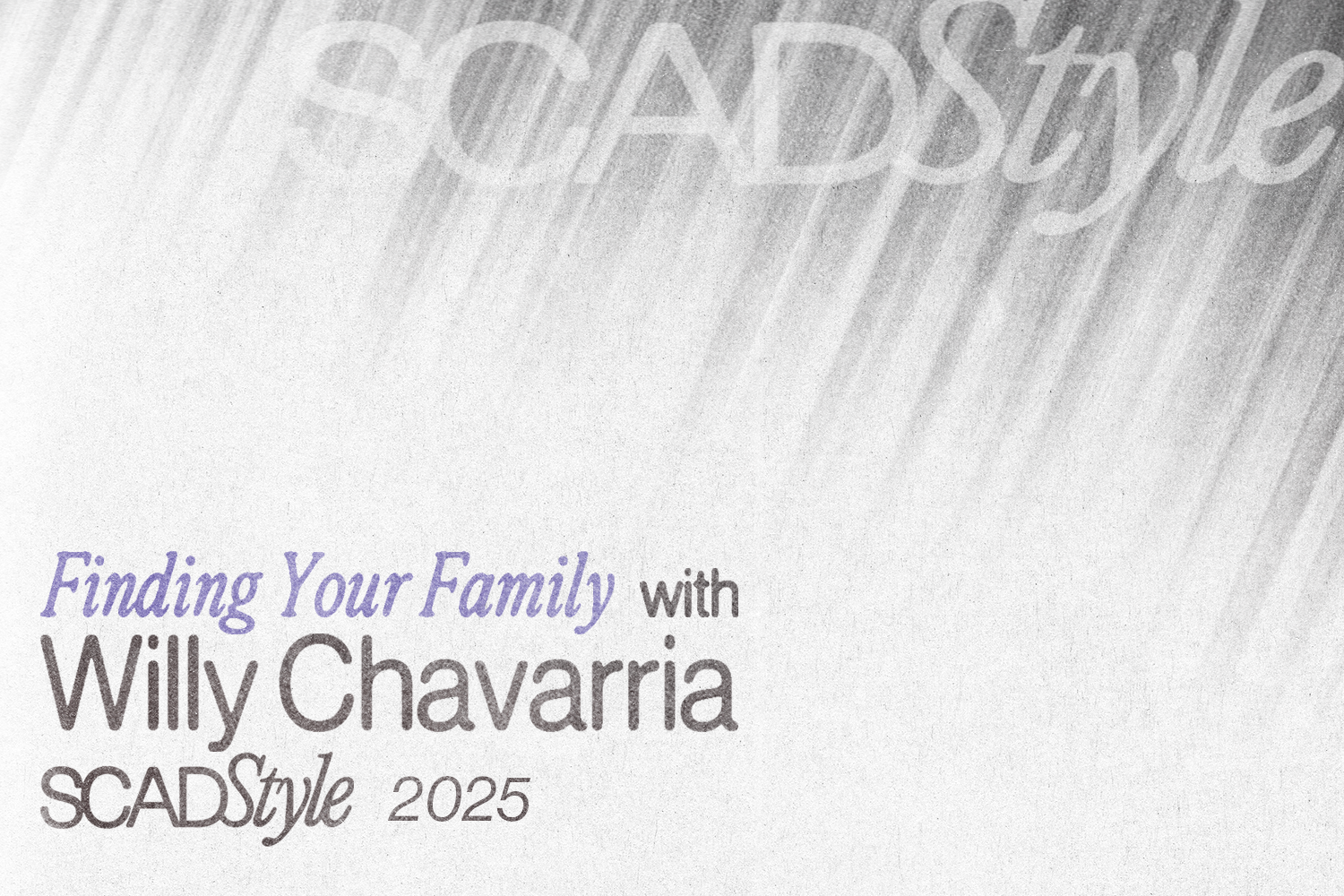When was the last time you felt safe? I mean truly content, comfortable, and carefree. As SCAD Style 2025 comes to an end, I can’t help but realize how wonderful it is to feel welcome. Lately, the world has felt inescapably and dangerously divisive (but really, when was the last time it felt genuinely united?), but luckily, Willy Chavarria is the shining light at the end of the shadowy tunnel.
Held at the SCAD Museum of Art, Chavarria led an insightful conversation on heritage, beginnings, and change, which was moderated by Irina Grechko, Refinery 29’s Fashion Director. Starting with the foundation of his namesake brand, Chavarria discussed the importance of identity. He asked himself what was valuable to the label and came to the realization that it was far more than just the clothes; it was humanity. These values stay with him to this day, and though “there’s a huge void of people doing things the old way,” Chavarria will always jump the never-ending hurdles to break down exclusion and open the door for others.
Moving the needle is always the goal of each show, collection, and collaboration, and though the pressure is relentless, Chavarria stated, “you have to keep people inspired. There is no rest, it’s just go, go, go,” and at the end of the day, the most important thing is “taking what’s ours and giving it back to us,” because it’s “our turn to take control of the narrative and restore our dignity.”
“Everyone I work with has a common philosophy. You must align yourself with people who belong to a community of love and acceptance.” Chavarria answered when asked about protecting the visuals of his brand. This sense of community is maintained throughout his business practices, casting choices, and marketing. He likes to familiarize himself with the models, find common ground, and constantly search for a sense of sensitivity and vulnerability in anyone and everyone he crosses paths with.
After the talk, I had a quick moment to ask Chavarria a few questions. Settled in a cozy stairwell between a few dressforms at Eckburg Hall, we tested our tiny mics before getting right into it.
Miia Popovics: I want to ask about your relationship with the Human Rights Campaign and your collaborative process with them, as well as other brands like Adidas and Tinder. How do those relationships contribute to your creative process?
Willy Chavarria: I love collaborations because it enables me to reach more people and utilize some of the aspects of their reach with what I want to get out into the world. Adidas is such a huge, mega-global brand. It enables me to get my name, my product, and my message out into stores that I’m not already in. It also enables me to offer lower price points so I can reach a wider audience because, for the most part, I sell luxury. So, as part of my brand ethos, I want to make sure that I can have a more democratic offering, and partnering with companies like Adidas, who are able to manufacture in large quantities, really enables me to reach those price points.
MP: Lovely. I’m also really curious about the process of Tarantula. You basically had the show locked, and then Bishop Budde gave the speech that you decided to incorporate at the end of the show as it closed. I would love to know the inside details on how that happened and the process of incorporating that into the show at such a last minute.
WC: Yeah. The speech and the inauguration actually happened a few days before the show, but I hadn’t heard it because I was so busy. People were just texting me, like, “Oh, you gotta, you gotta see this. It’s so beautiful”. So the night before the show is when I first heard it, and my team and I were just watching the video, and it was so beautiful and so powerful and so graceful and eloquent and strong that I just knew it had to be shown. We were actually showing in an Episcopal Church, and the bishop was Episcopalian, so it made perfect sense. During the final rehearsal, I decided to change the ending of the show and have all of the models land at one end of the church so that the audience could see all these amazing people and play the bishop’s speech to incorporate that power. It was so beautiful, and we loved it.
MP: Thank you for providing such a hope and resistance for the community, and I can’t wait to see what you do next.
WC: Thank you. Thank you.
Words by Miia Popovics
Graphics by Eve Friday

